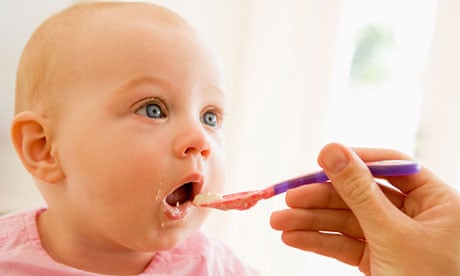Baby food can be big business,
but where's the market pull?
The
Indian baby food market, though at a nascent stage, is among the fastest
growing baby food markets in the world. In the last few years, it has grown at
10-12 percent per annum. However, lack of product awareness among consumers,
ban on advertisement of baby food products and strict government regulations
are limiting the scope of its growth.
The joy
of parenthood comes with the much bigger responsibility of raising a healthy
baby - inculcating right values and providing proper nutrition, among other things.
Proper nutrition to infants and children becomes significant because poor
feeding practices in infancy and early childhood, as the guidelines issued by
the Ministry of Women & Child Development also highlight, result in
impaired cognitive and social development of the child.
In
Indian homes, where traditionally it is grandparents and the extended family
who take on the role of providing advice on correct baby food to new parents,
the use of infant formula (a food manufactured to support the great adequate
growth of infants under six months of age when fed as a sole source of
nutrition) in baby diet during the neonatal period is neither recommended nor
considered acceptable by parents, unless, of course, medically advised.
Thereafter, infant formula is used as a top-up or a replacement for
breastfeeding. The Indian baby diet, therefore, is dominated by traditional
home-made items, such as porridge of semolina, wheat flour, ground rice,
khichdi, dalia and other similar grain or fruit- and vegetable-based products.
These foods serve the purpose of providing essential vitamins and minerals
needed during the growing years, as well as acclimatising the baby to the
family eating habits. Given the importance accorded to breastfeeding as well as
home-made food over purchased food, Indian parents are still not used to the
idea of packaged baby food. Therefore, packaged baby food consumption in India
remains largely restricted to urban areas.
A
Market with Immense Scope
India
has the largest baby population in the world with over 75 million babies up to
the age of three. With the per capita expenditure on babies being one of the
lowest, the Indian baby foods market offers immense scope.
Currently,
the Indian baby food market is pegged at over Rs.1,500 crore, growing at an
average rate of 10-12 percent in the last five years. Infant formula and baby
cereals form a major chunk of the total baby food market, followed by snacks
and bottled baby food. Currently, Nestle has the monopoly in the Indian baby
food market. It commands more than 75 percent market share in the infant
formula category with strong brands such as Lactogen and Nan.
Nestle
also dominates the Indian baby cereal market with an equivalent market share
and popular brands such as Cerelac and Nestum. Farex from Abbott Laboratories
(earlier owned by Wockhardt) is a distant second in the baby cereals category.
Parents
in the U.S. and the U.K. annually spend approximately $500 and $400,
respectively, on baby foods, including infant formula. At around $4 per capita
expenditure on babies, India lags way behind western countries and even among
the emerging economies such as Brazil and China. In fact, per capita
expenditure on babies in India is almost one-twentieth of the Chinese per
capita spending on babies. In terms of growth rates, though, China and India
are one of the fastest growing markets with annual growth rates of around 17
percent and 11 percent, respectively.
Strict
guidelines regarding infant foods make it difficult for companies to operate in
the Indian baby food market.
Read: part II
Read: part II

No comments:
Post a Comment